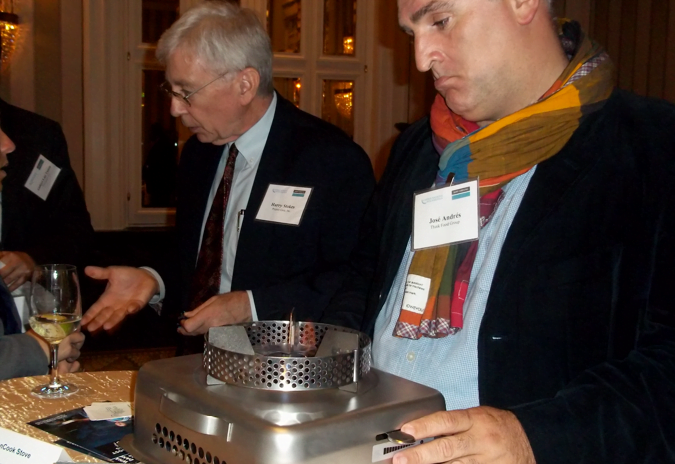Ed note. This is a special guest post from Radha Muthiah, Executive Director, Global Alliance for Clean Cookstoves — a project of the UN Foundation.
A few days ago, I visited the Burns Department at Lok Nayak Hospital in New Delhi. This is only one of two major treatment centers for burn victims in Delhi that serves people from five states in Northern India. One of my objectives for this visit was to gain a better understanding of the root causes of burn injuries in India and to hear first-hand from medical experts that confront this reality every day.
With over 30 years of professional medical experience, Dr. Rajeev B. Ahuja is a renowned plastic surgeon specialized in burns, the Head of the Burns Department at Lok Nayak Hospital as well as a passionate advocate for the prevention of kitchen burns. Dr. Ahuja is also the Secretary of the International Society for Burn Injuries.
As Dr. Ahuja took us around his department with a group of medical school residents, he told us how he became interested in the broader public health issues related to cooking on open fires and was very pleased to learn about the mission of the Global Alliance for Clean Cookstoves. For decades, he said, he approached the issue of burns purely from a treatment perspective.
The majority of Dr. Ahuja’s patients are victims of kitchen accidents. A lot of the injuries he sees are a result of explosions of kerosene pumps or women’s garments being caught in the open fires. Because poor women often cook close to the ground, he told us that their children are also at a high risk of being injured as well. Most of the children he sees at the hospital are victims of scalding. A scald is a type of burn injury caused by hot liquids or gases, most frequently milk or water.
One of the problems highlighted by Dr. Ahuja is the lack of systemic data on the causes of burns in India, including how many of these are cookstove-related. In his own Department, Dr. Ahuja has attempted to keep track of such causes. A few months ago, he published a study based on a sample of medical records of patients that went through his Department. He says this is just a small pool and that the problem outside of Delhi is likely to be much greater and underreported.
As I walked around the ward and listened to Dr. Ahuja, I thought about how doctors in India and other countries are often forced to look at the bigger picture. It was clear to me that Dr. Ahuja had spent a lot of time not just treating burns but thinking about all the conditions that make such accidents more likely to happen, like poverty, ill-equipped kitchens and lack of education.
These doctors work in less than ideal conditions and yet are expected to do miracle work toward the fulfillment of national public health efforts. I was very humbled by Dr. Ahuja and his residents’ commitment and passion to heal the plight of burn victims in India. It is my hope that the Global Alliance for Clean Cookstoves can support the efforts of professionals like Dr. Ahuja by ensuring that more Indian families have access to clean fuels and cookstoves.
The Global Alliance for Clean Cookstoves is a public-private initiative led by the United Nations Foundation to save lives, improve livelihoods, empower women and combat climate change by creating a thriving global market for clean cookstoves and fuels. Learn more at www.cleancookstoves.org, and follow Radha and the Alliance @RadhaStoves and @cookstoves.
